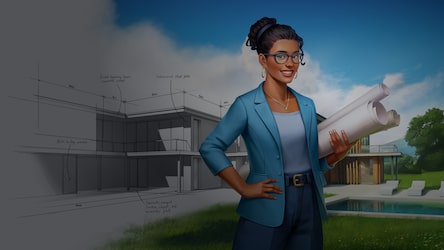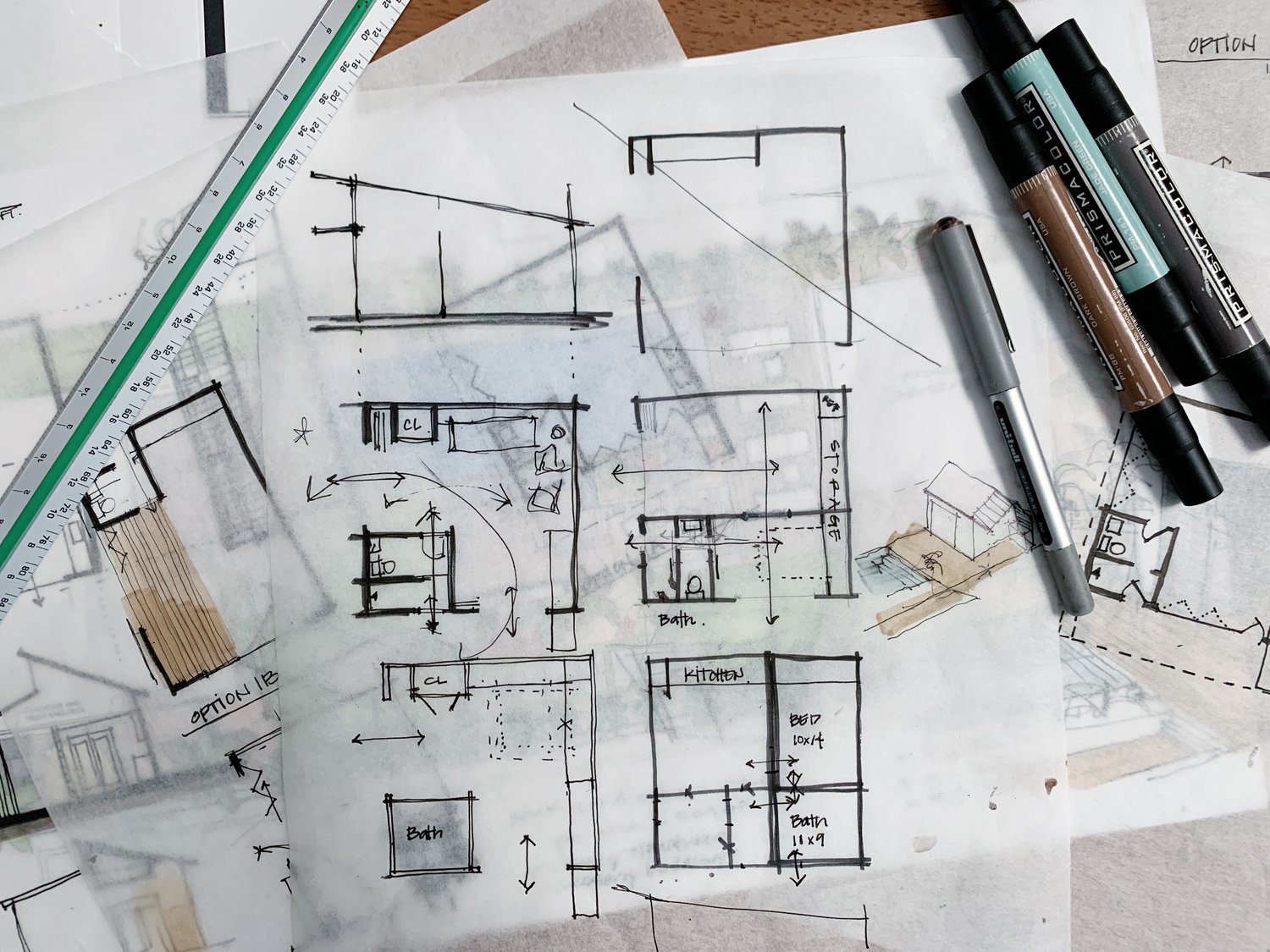Architect Insights on Balancing Form and Function
Architect Insights on Balancing Form and Function
Blog Article
Recognizing the Diverse Profession Paths Available for Aspiring Architect
As an aspiring Architect, you have a world of occupation paths waiting for you. Whether you're attracted to standard style or the subtleties of sustainable layout, there's a particular niche that straightens with your passions.
Standard Style: Creating Structures and Frameworks
Typical style focuses on creating buildings and structures that mix performance with aesthetic allure. As you discover this field, you'll appreciate the complex equilibrium in between form and objective. You'll learn to draw ideas from historic designs, incorporating aspects like symmetry, products, and craftsmanship. Your designs can show social heritage, showcasing local traditions while fulfilling contemporary demands.
You'll create skills in composing, model-making, and site analysis, allowing you to picture and connect your ideas successfully. Involving with customers, you'll require to recognize their vision and translate it right into viable designs.
Moreover, developing codes and sustainability methods are essential in your work, ensuring your frameworks are environmentally friendly and risk-free. As you grow in your job, you'll find possibilities in residential, industrial, or even restoration jobs, each offering one-of-a-kind difficulties. Embracing traditional design paves the method for a fulfilling profession that admires the past while forming the future.
Urban Preparation: Shaping Communities and Public Spaces
As an aspiring Architect, you can play a vital function as a metropolitan coordinator, transforming just how neighborhoods function and engage. By utilizing area interaction strategies, you'll ensure that residents have a voice fit their environment. And also, incorporating sustainable layout principles will certainly help produce rooms that not only fulfill today's needs yet also shield the future.
Role of Urban Planners
While lots of could believe of designers as the single enthusiasts behind buildings, metropolitan coordinators play a necessary duty in forming the wider landscape of neighborhoods and public areas. By working together with different stakeholders, you'll help develop parks, transportation systems, and residential locations that advertise social communication and access. Your proficiency in spatial design and community characteristics permits you to imagine future development while protecting cultural heritage.
Community Involvement Approaches
Reliable neighborhood interaction techniques are crucial for metropolitan planners to assure that the voices of locals are heard and valued in the preparation process. To cultivate significant dialogue, you need to prioritize open discussion forums and workshops where neighborhood members can share their ideas and concerns. Usage surveys and social media sites to reach a more comprehensive audience, ensuring diverse perspectives are consisted of. Collaborating with neighborhood organizations can boost count on and promote deeper links. It is necessary to offer clear info concerning proposed projects and decision-making processes, allowing locals to feel informed and empowered. By proactively integrating and listening responses, you'll produce spaces that show the neighborhood's requirements, ultimately leading to even more successful and lasting metropolitan atmospheres. Accept openness and continual discussion for long lasting influence.
Lasting Style Concepts
When designing urban spaces, integrating sustainable design principles is important for developing environments that prosper both ecologically and socially. Take into consideration incorporating eco-friendly areas, like gardens and parks, to boost biodiversity and improve air top quality.
Designing with water conservation in mind is additionally key-- assume about rainfall yards and absorptive surface areas to handle stormwater. Entailing area participants throughout the planning procedure assurances that the spaces you produce satisfy their needs and encourage social communication. By accepting these concepts, you'll add to vibrant, lasting urban landscapes that profit every person.

Landscape Style: Creating Lasting Outdoor Settings
As you check out landscape style, you'll find crucial style principles that create functional and gorgeous outside rooms. Sustainable practices play an essential function in making sure these environments thrive while lessening environmental impact. And also, you'll locate a range of career opportunities that enable you to make an actual difference in exactly how individuals interact with nature.
Style Principles in Landscape
Understanding style concepts in landscape style is crucial for creating sustainable outside settings that balance with nature. You'll need to contemplate components like equilibrium, percentage, and range to guarantee your styles really feel cohesive and welcoming. Including native plants not just enhances biodiversity yet likewise minimizes water use, making your landscape resilient. Consider the flow of area and just how individuals communicate with it; paths and seating locations ought to invite expedition and leisure. Additionally, take note of seasonal adjustments, designing with materials that match the environments year-round (Architect). By prioritizing sustainability and aesthetics, you can produce outside rooms that improve the community and promote wellness. Welcoming these concepts will certainly establish a solid structure for your job in landscape architecture.
Sustainable Practices Overview
Sustainable methods in landscape style not only focus on aesthetic appeals yet also prioritize eco-friendly health and resource preservation. You can make spaces that promote dirt wellness, such as using organic products and exercising permaculture concepts. Inevitably, these practices ensure your styles profit both people and the environment for years to come.
Career Opportunities Exploration
With a solid structure in lasting techniques, landscape architecture provides a range of occupation courses that permit you to make a meaningful influence on the atmosphere. You might work as a landscape designer, producing visually pleasing and useful exterior rooms, or concentrate on eco-friendly restoration, helping to revive broken ecosystems. Urban planners frequently work together with landscape architects to create green spaces in urban setups, improving city livability. If you're passionate about education and learning, take into consideration becoming a landscape architecture educator, motivating future generations. In addition, you may collaborate with nonprofits concentrated on environmental sustainability or engage in study to introduce new practices. Each course not just shapes lovely atmospheres however also cultivates a much healthier world link for future generations.
Lasting Style: Concentrating on Eco-Friendly Practices
As you explore your occupation in architecture, welcoming eco-friendly methods can set you apart in a competitive area. Sustainable layout focuses on producing buildings that lessen ecological effect while boosting resident wellness. By incorporating sustainable products, energy-efficient systems, and sustainable building strategies, you'll contribute to a greener future.
Begin by obtaining knowledge of environment-friendly go to this website certifications like LEED or BREEAM, which can boost your qualifications. Consider exactly how all-natural light, air flow, and thermal efficiency can enhance layout. Work together with designers and ecological specialists to innovate solutions that minimize waste and conserve sources.
Do not forget the value of area participation-- engaging local stakeholders can influence styles that integrate with the setting. As clients increasingly prioritize sustainability, your experience in environment-friendly techniques will certainly not just bring in projects but also satisfy your enthusiasm for accountable design. Accept this vital facet of the career, and see your career flourish.
Historical Conservation: Shielding and Recovering Social Heritage
While you start on your building trip, think about the necessary function of historic preservation in maintaining our cultural heritage. This area concentrates on the defense and repair of considerable buildings, websites, and frameworks that inform the tales of our past. By involving in historic preservation, you'll aid guard the building tradition that shapes community identification.
As a historical conservation Architect, you'll evaluate historical significance and evaluate the condition of structures. You'll work closely with preservationists and chroniclers to ensure authentic reconstruction strategies are employed. This job path allows you to mix creativity with study, enabling you to make services that respect original products and craftsmanship.
Your job not only adds to sustainability by reusing existing structures yet likewise cultivates a sense of satisfaction within communities. Welcoming this path will certainly aid you end up being a guardian of background, preserving the tales and appearances that enhance our lives.
Inside Architecture: Enhancing Indoor Spaces
Historical preservation and indoor architecture both share a commitment to boosting the built atmosphere, however they concentrate on different elements. While historical preservation highlights preserving a framework's resource cultural and historical worth, interior architecture nos in on maximizing indoor spaces for performance and visual appeals.
As an ambitious Architect, you'll find that interior architecture permits you to blend imagination with technological abilities. You'll design spaces that not only look great however additionally advertise convenience and efficiency. This field involves comprehending exactly how light, shade, and products connect within a space, affecting mood and usability.
You'll service different jobs, from household homes to commercial offices, guaranteeing that each atmosphere satisfies the requirements of its owners. By focusing on customer experience, you can transform interiors into useful and inspiring spaces, making a substantial effect on just how individuals connect with their environments. Accept the chance to improve indoor environments and form the means individuals work and live.
Industrial Design: Merging Capability With Aesthetic Appeals
Industrial design plays a vital role in creating items that flawlessly mix aesthetic appeals with performance, guaranteeing that what you use day-to-day is not just visually appealing yet likewise useful. As an aspiring Architect, you might immerse on your own in this field, focusing on designing every little thing from furnishings to consumer electronic devices. Your job involves understanding customer requirements, materials, and making processes, permitting you to produce innovative remedies that improve daily experiences.
In commercial design, you'll often team up with marketers, designers, and manufacturers, making certain that your designs are not just gorgeous however also practical. You'll learn to balance kind and function, prioritizing functionality without giving up style. By refining your skills in sketching, 3D modeling, and prototyping, you'll be well-appointed to bring your concepts to life. This job path offers a vibrant setting where creativity satisfies practicality, making it a rewarding option for engineers interested in shaping the products of tomorrow.
Often Asked Questions
What Educational Credentials Do I Need to Come To Be an Engineer?
To come to be an engineer, you'll require an expert level in design, normally a Bachelor's or Master's. Furthermore, you'll have to finish an internship and pass the Architect Enrollment Evaluation to exercise lawfully.
Are There Certification Needs for Different Building Occupation Paths?
Yes, there're accreditation needs for different architectural courses. Architect. You'll need to pass exams, full internships, and sometimes seek specialized training, depending upon your chosen emphasis, like landscape architecture, city style, or historical preservation
What Software Program Skills Are Essential for Engineers Today?

Exactly How Can I Gain Practical Experience While Studying Design?
You can get useful experience by interning at architectural firms, taking part in design competitors, volunteering for community tasks, or teaming up with schoolmates on real-world assignments. These possibilities improve your abilities and develop valuable links in the industry.
What Work Opportunities Exist Outside Standard Architecture Firms?
You can discover various task opportunities outside standard architecture companies, like urban planning, indoor design, landscape style, construction monitoring, realty advancement, and even roles in sustainability consulting. Each deals unique obstacles and incentives.
Whether you're drawn to standard style or the nuances of sustainable layout, there's a specific niche that straightens with your interests.When developing city spaces, integrating lasting layout principles is vital for creating environments that prosper both environmentally and socially.As you discover landscape architecture, you'll discover vital layout concepts that create useful and beautiful outside areas.Recognizing design principles in landscape design is crucial for producing lasting exterior atmospheres that harmonize with nature.In commercial layout, you'll often collaborate with marketers, manufacturers, and engineers, ensuring that your layouts are not just lovely yet likewise practical.
Report this page